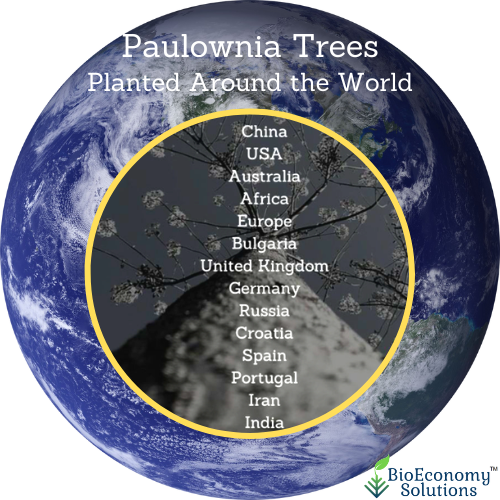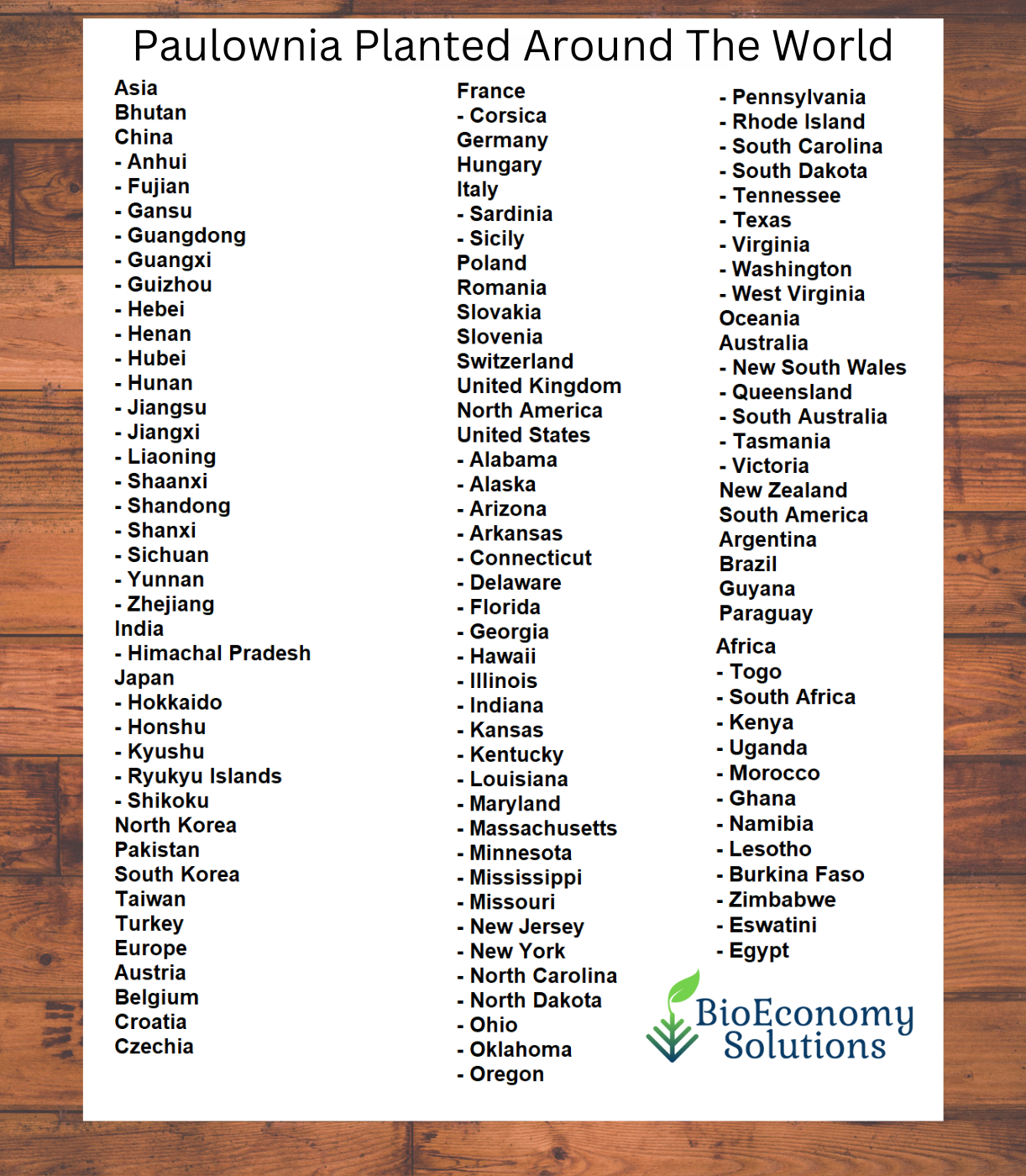Paulownia Trees Planted Around The World
Paulownia trees are planted in over 60 countries.

History of Introduction Paulownia Trees and International Spread
In the past, P. tomentosa has been introduced as an ornamental in many European countries and in the USA. It was brought to Europe in the 1830s by the Dutch East India Company, and taken to North America a few years later, and has been naturalized in the eastern USA and is also grown on the west coast.

Details of Where Paulownia Are Planted CABI link: https://www.cabidigitallibrary.org/doi/10.1079/cabicompendium.39100
You must know that there are 17 different species of paulownia.
Everyone reading this post must do their homework. There are 17 different species of paulownia trees (depending on taxonomic authority) in the family Paulowniaceae.
TYPES OF PAULOWNIA TREES
Six to 17 species, including: Paulownia catalpifolia Paulownia elongata Paulownia fargesii Paulownia fortunei Paulownia kawakamii Paulownia taiwaniana Paulownia tomentosa
Tested and confirmed species:[13]
Paulownia kawakamii
Paulownia tomentosa
Paulownia catalpifolia
Paulownia x taiwaniana
Paulownia elongata
Paulownia fargesii
Paulownia fortunei — dragon tree.[25]
Potential variety, hybrid, and synonym species:
Paulownia glabrata
Paulownia grandifolia
Paulownia imperialis
Paulownia australis
Paulownia lilacina
Paulownia longifolia
Paulownia meridionalis
Paulownia mikado
Paulownia recurva
Paulownia rehderiana
Paulownia shensiensis
Paulownia silvestrii
Paulownia thyrsoidea
Paulownia duclouxii
Paulownia viscosa
Prepared by CABI of Wellington, UK for the purpose of identification of the Paulownia Elongata species for use in United Nation countries for Carbon Credit plantations. This document accepts the Paulownia Elongata as a non-invasive species in all United Nation Countries.
It says in that document “Paulownia is categorized as an invasive exotic”.
Yes it dos say that.
BUT IT ALSO SAYS:
Paulownia is categorized as an invasive exotic. Although there is little doubt that it is an exotic, the question of its invasiveness is open to conjecture. The many small seeds of Paulownia are windblown. However, the seeds do not germinate and survive unless the seed falls on sterile soil. New germinates of Paulownia have a high rate of mortality from damping-off disease caused by a variety of soil fungi. Generally, Paulownia does not colonize open areas unless sterile soil is present, as in construction activities, recent burned areas and road cuts. Rarely does Paulownia colonize fields, because of the ever-present fungi.
Only one, the tomentosa, is listed as invasive in some areas. This single species has painted the entirety of the genus into the corner of being labeled as invasive and gets all the attention, while the other species are assumed to have the same traits. This is an incorrect assumption that requires further exploration.
The species as a whole should not be labeled as invasive. The seeds are extremely difficult to germinate and the trees actually have a low survival rate in the wild compared to native trees.
Paulownia offer many ecosystem benefits including carbon drawdown, soil restoration, pollination services, and shade for companion crops not found in other trees. All together, these characteristics make the paulownia an ideal tree to grow for both economic and environmental reasons.
Most of the information found on the internet does not differentiate between the 17 different species within the genus Paulownia, but only one, the tomentosa, is invasive in some areas of the world.
Do Your Paulownia RESEARCH:
Plenty of research is available… perhaps start here: https://extension.tennessee.edu/publications/documents/pb1465.pdf
https://www.cabidigitallibrary.org/doi/10.1079/cabicompendium.39100
LEARN MORE
Visit us at: https://bioeconomysolutions.com/paulownia-carbon-credits/ Let’s chat about paulownia tree solutions for sustainable Forest carbon credits projects.
Where to buy paulownia? We’re providing new paulownia trees from our U.S. South Carolina Paulownia tree farm facility.
Contact Us for details. Office: 843.305.4777 | Email: mail@bioeconomysolutions.com Here’s a link to our online calendar, schedule a conference call with us: www.bioeconomysolutions.com/bookcall
LIKE|SHARE|COMMENT
Enjoy this article? You may also enjoy “Are U.S. Carbon Credits Key For Forests Project Commercial Viability?” https://www.linkedin.com/pulse/carbon-credits-key-forests-project-commercial-victor-garlington
#greentech #carbonfootprint #climatechange #sustainability #renewableenergy #globalwarming #environment #circulareconomy #sustainable #carbon #sequestration #carbondeveloper #carbonproject #carboncredit #paulownia #trees #naturebased #bioeconomy #solutions #kiri #empresstree